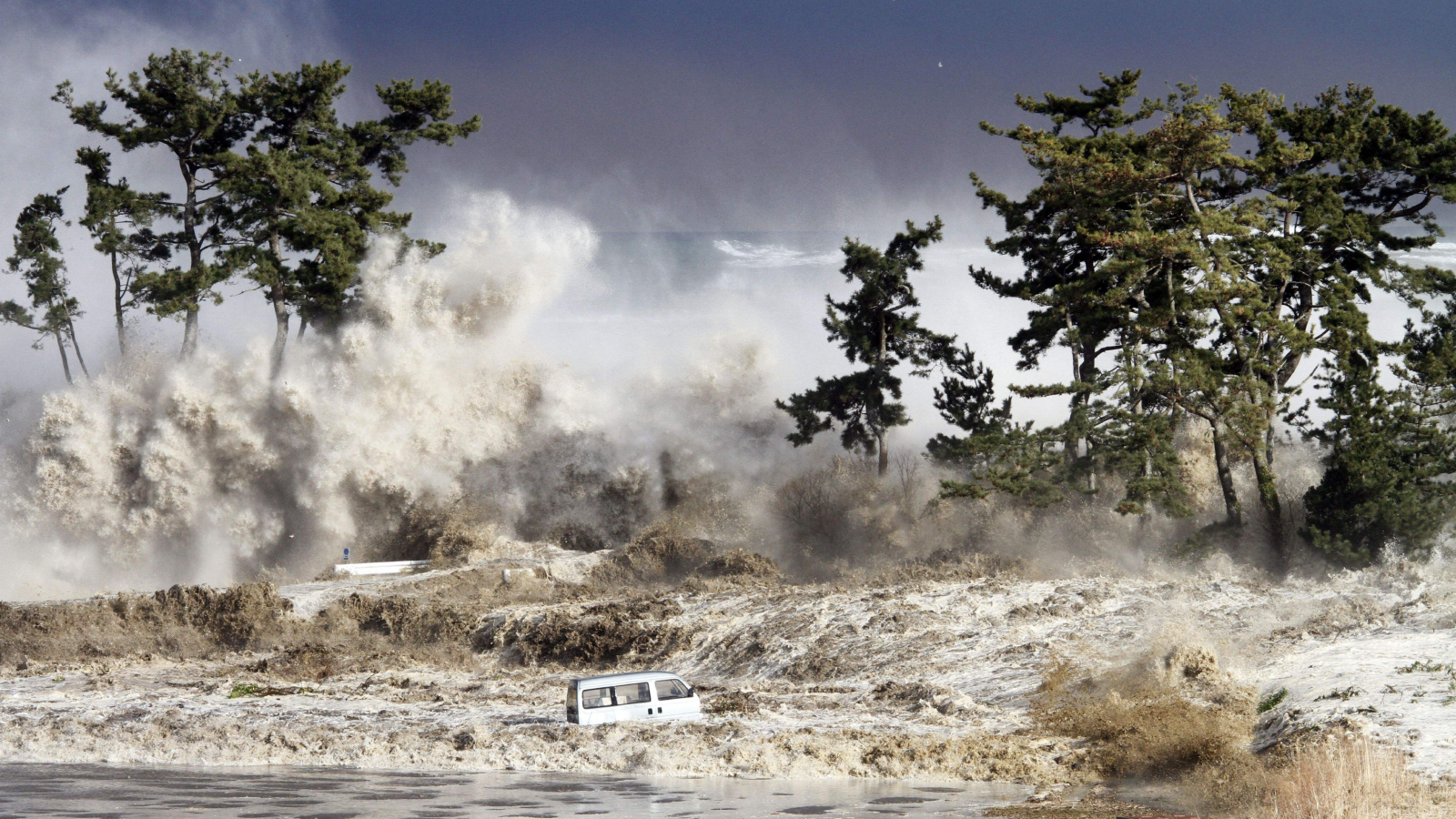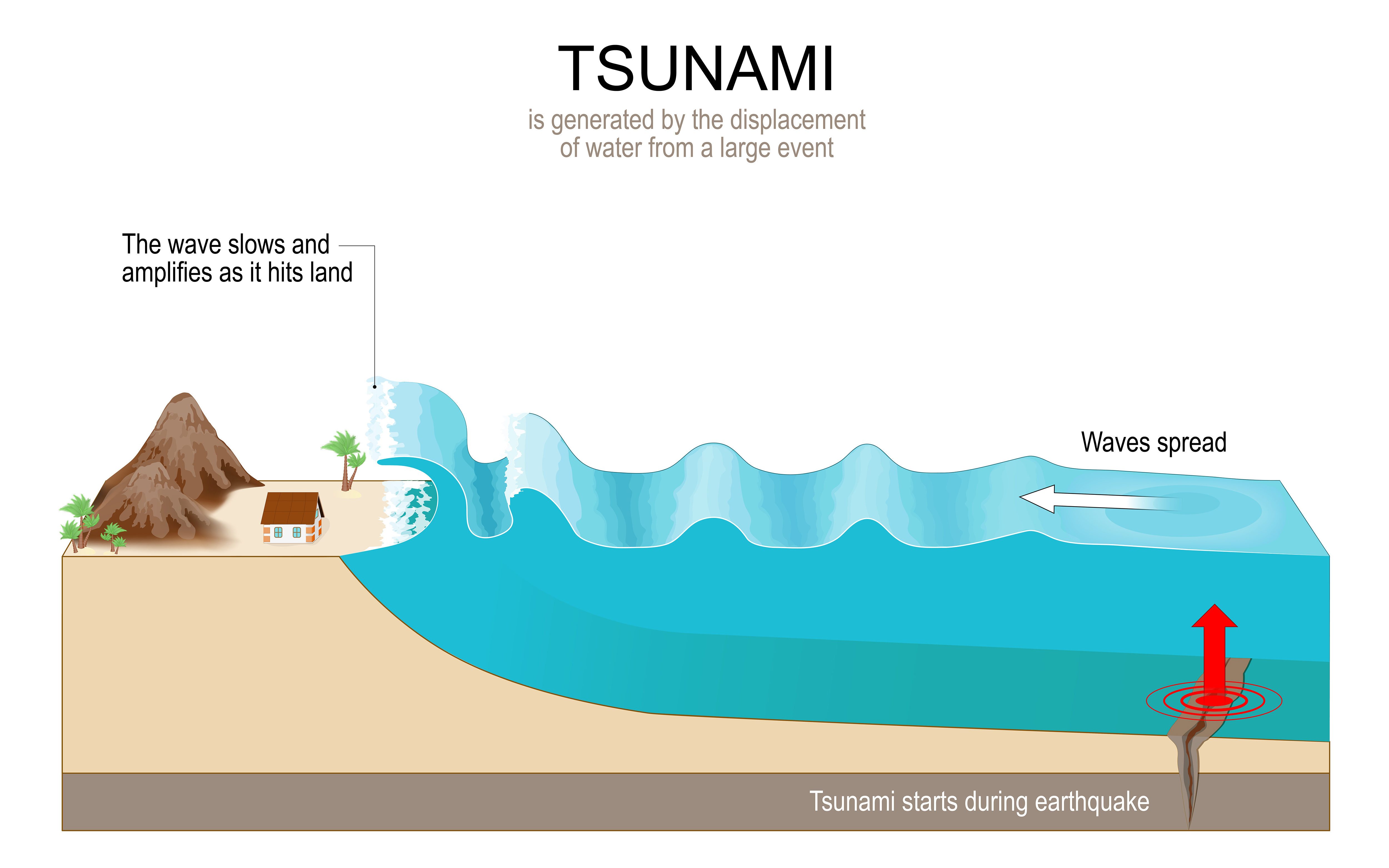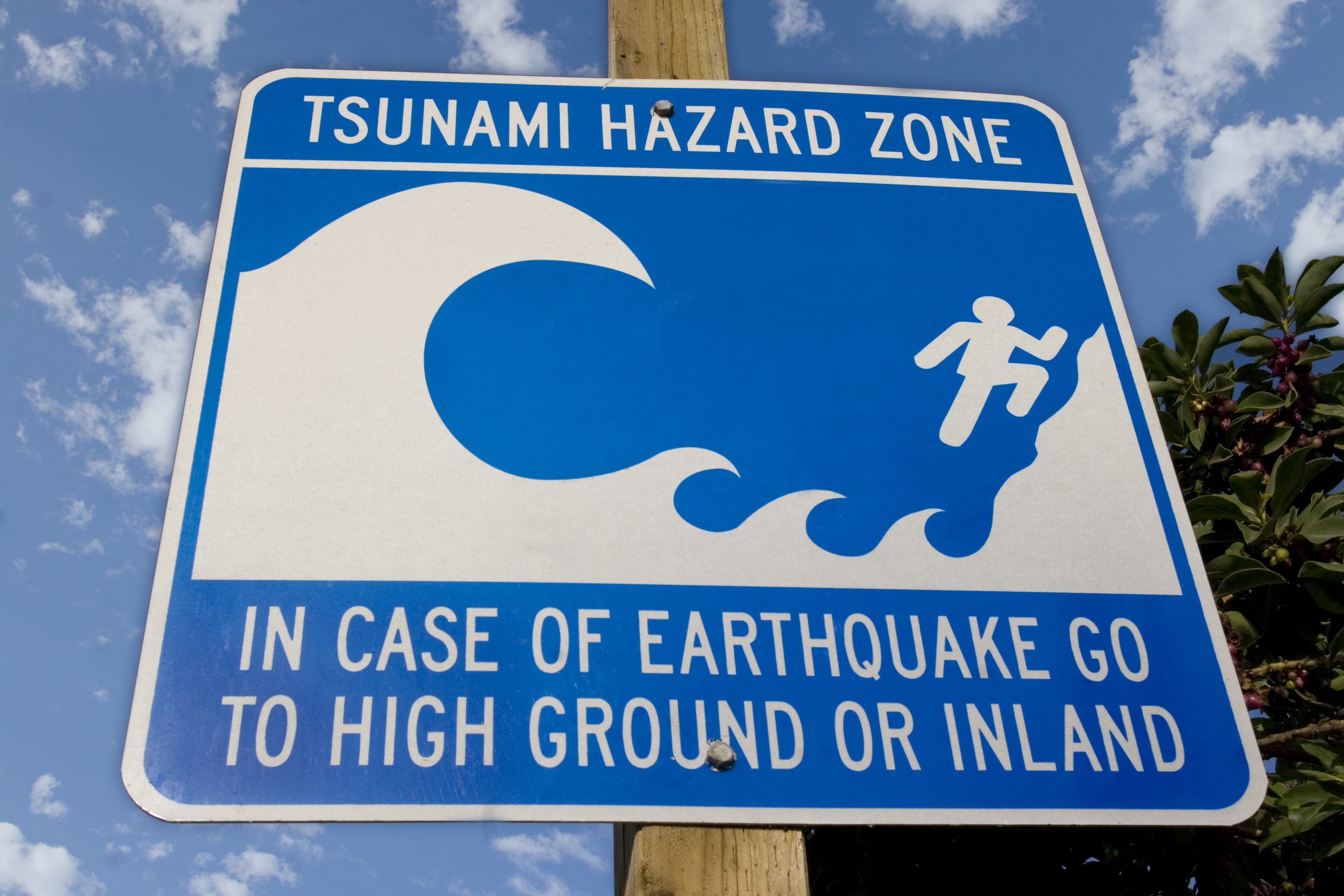
Tidal waves and tsunamis — the two most powerful types of wave on Earth— are often confused in popular discourse. While the terms are sometimes used synonymously, tidal waves and tsunamis actually have distinct causes.
"The English term tidal wave dominated until the 2004 Indian Ocean tsunami, partly because most tsunami observations until then described water phenomena that resembled fast advancing or fast-receding tides," Costas Synolakis, director of the Tsunami Research Center at the University of Southern California, told Live Science. "In 2004, we got access to several videos from the tsunami in Indonesia and Thailand, and realized that giant tsunamis do not resemble tides."
Tidal waves are caused by the gravitational interaction between Earth and the moon — and to a lesser extent, the sun. These waves are products of the tidal patterns that result in daily low and high tides in coastal areas, meaning they are generally predictable, correlating to the phases of the moon.
Tides are highest during the new moon — when the moon is between Earth and the sun; and the full moon, when Earth sits between the moon and the sun.
Related: Tsunamis up to 90 feet high smash into New Zealand every 580 years, study finds
The moon's gravity exerts a greater force on the regions of Earth closest to the moon, which pulls on water there, causing the ocean to rise in a bulge. Meanwhile, oceans on the side of Earth opposite the moon also experience a bulge due to inertia — the natural tendency of a moving object to keep moving or a motionless object to remain motionless. The water moving away from the moon resists the gravitational forces that attempt to pull it in the opposite direction.
These two bulges move around Earth as our planet rotates and the moon orbits us, meaning most regions experience high tide twice every 24 hours and 50 minutes. Low tides, meanwhile, occur in the areas that are not either closest or farthest from the moon.
A tidal wave may stretch for thousands of miles. In many cases, tidal waves are small. But certain geographic features, such as narrow inlets and river mouths, can concentrate the energy of tides, creating enormous waves in some areas.
Tidal waves, however, are no match for the destructive force of tsunamis — a term meaning "harbor wave" in Japanese. Unlike tidal waves, tsunamis are largely unpredictable. They result from underwater earthquakes, landslides, volcanoes and even meteorites.

Underwater earthquakes at subduction zones, where one continental plate slides beneath another, frequently cause large tsunamis. Earthquakes with a magnitude of 6.5 or greater that occur at relatively shallow depths and lift Earth's crust are likely to cause tsunamis. In addition, volcanoes and landslides — either underwater or on land adjacent to the ocean — result in the movement of large amounts of magma and rocks that can trigger tsunamis. These events may be missed by early detection systems, Synolakis said.
The force from events like these displaces water, and the energy from that displacement propagates as a wave. Tsunamis can be local, regional or distant, depending on the magnitude. Tsunamis may result from events that occur close to where the wave hits the shoreline but can also occur thousands of miles away.

Tsunamis may be barely visible, raising the ocean's surface by mere inches. But they can travel at speeds of 500 mph (800 km/h). Periods range from a few minutes to two hours. While the shallower depths near coastlines slow the waves down, they increase the height because the waves following the initial wavefront catch up, adding force behind it. This phenomenon accounts for the massive walls of water that can occur as tsunamis make landfall.
Because tsunamis are largely unpredictable, people in vulnerable coastal areas may have only a few minutes of warning to get to higher ground. Some of the largest tsunamis have created waves that inundated areas several miles inland. In the wake of the devastating 2004 Indian Ocean tsunami, which resulted in nearly 230,000 deaths, sensors were installed in at-risk regions to create an early warning system.
"Tsunamis are monitored with the Deep-ocean Assessment and Reporting of Tsunamis (DART) system. This is a network of offshore buoys which relay a signal from ocean floor pressure recorders to the ocean surface then to satellites, which in turn relate the signal to the warning centers," Synolakis said. But the system is far from perfect.
"The problem is that now about 50 DARTs cover the Pacific and Indian Oceans. About half work at any given time. We need at least 150 distributed around the world's oceans for an effective system with targeted warnings," he said.







